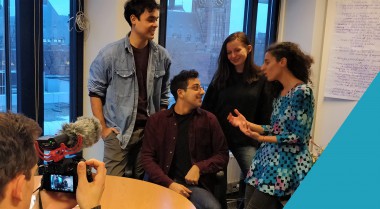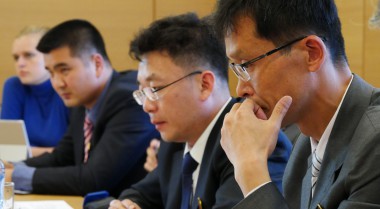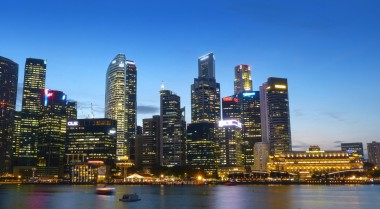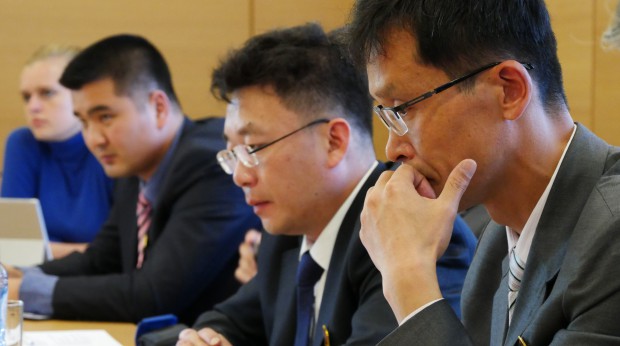
Out Now: Second Series of the Peace Corner Podcast!
We are back with the second series of the Peace Corner podcast! Picking up on where we left off, our ambitious interns pursue the quest for knowledge. They will swirl down the path in their pursuit of curiosity. And we will follow them to find out more from the voices behind peace. With each pod, we will be talking to a different peacebuilder, with a different story to tell. By offering unique perspectives on a spectrum of issues, we hope to engage, challenge, and open your ears to the many courageous voices making peace possible. Did you know we can be found on iTunes, Spotify, Soundcloud, Stitcher and more? Make sure to subscribe, if you want to stay tuned!
Trump-Kim Summit: Back to Square One or a Step to Peace?
For the first episode, we dove back into the studio with returning guest and peacebuilder Meri Joyce from Peace Boat. Following the wave of disappointment that struck the peacebuilding community after the long-awaited Trump-Kim Summit in Hanoi, Vietnam, we wondered: where are we now? Without a peace agreement, what are we left with? Or was this Summit still a small step towards peace on the Korean Peninsula? Tune in now!
Dialogue in Mexico: The Antidote for Drug-Related Violence
For the second episode, we sat down with the President of SERAPAZ, Miguel Álvarez Gándara, a Mexican peacebuilder in heart and word. For decades, Mexico has been embroiled in a deadly war on drugs. While the lens of the media remains focused on the government and infamous drug cartels, those striving for a better society remain invisible. It is time to change that. So, we sat down with the President of SERAPAZ. We asked him: How can dialogue serve as the antidote to the violence? How can we shift away from a culture of violence to one of peace?
Solidarity in Southeast Asia: A Unified Voice for Peace
The struggle for identity and self-determination fuel conflict in many regions of the world. In Southeast Asia particularly these struggles have become crises in Mindanao and Myanmar. Against this backdrop, there are those that struggle tirelessly for a change. Makers and builders of peace who believe that solidarity between peoples is the way to advocate for peace. To understand how this solidarity grows and has the power to break the status quo, we sat down with Filipino peace guru Gus Miclat, co-founder of Initiatives for International Dialogue (or IID), to ask: How can solidarity be a tool for peace in Southeast Asia?
Youth in Peacebuilding: Breaking the Silence
Nowadays, almost half of the world’s population is under the age of 24. Yet policy-making and the field of peacebuilding is still dominated by older men in suits. Why is that and how can we change it? How can we break the status quo and create space for youth at the peace table? To find out we spoke to dedicated peacebuilder Gizem Kilinç, the leading coordinator of the United Network of Young Peacebuilders (UNOY).
Shared Security: A New Era in Peacebuilding?
Worldwide, people are separated in the name of ‘national security’. Thousands of miles of walls and barbed wire, all with the sole purpose to keep out ‘the other’, the unknown. But all this comes at a cost: not only the trillions of dollars invested in steel, stone and weapons, but also at the cost of our shared humanity. But now, a new era of peacebuilding is on the horizon. Inspired by those who refuse to identify particular groups or demographics as threats to others. A group of nonconformists with one goal: to redefine security in an inclusive and egalitarian way. To find out more, we spoke to one of those peacebuilders, seeking ways to reframe our security as a shared responsibility. We sat down with Kerri Kennedy, the Associate General Secretary for International Programs at AFSC, and asked her: What makes us secure? And how can we reshape our security in a way that it is inclusive and shared?
The SDGs: A Blueprint for Peace
Let’s take you back to September 25th, 2015. A day where all the world leaders gathered at the United Nations Sustainable Development Summit in New York. It was here where they would draw up a blueprint of great importance for the upcoming 15 years. A blueprint of global action, a blueprint for peace and prosperity. And so.. the Sustainable Development Goals (SDGs) were born. Now, almost four years later, we are still faced with mass poverty, refugee flows and the collapse of icebergs. So, what has happened so far and what should still be done? How can we make sure that all 17 Sustainable Development Goals are actually achieved in the next 10 years? And why should the peacebuilding community care about the SDGs? To find out, we sat down with Deborah Seward, the Director of the United Nations Regional Information Centre (UNRIC).
Human Security: Towards Freedom for All
At the end of the Cold War, the neorealist paradigm focus on states, military security and the so-called ‘mutually assured destruction’ was challenged by the birth of a new concept, namely human security. This new concept emerged to articulate the need to focus on threats to individuals and communities and to go beyond states. Former UN Secretary General Kofi Annan wrote that “we will not enjoy development without security, we will not enjoy security without development and we will not enjoy either without respect for human rights.” But what does human security mean? And how can we make it more relevant?
To learn more about human security, what must be done to achieve it and what role civil society organisations must play, we spoke to Jon Rudy. Jon is the senior advisor on human security at the Alliance for Peacebuilding and is a long-time peacebuilder with over three decades of experience in peace and conflict.



